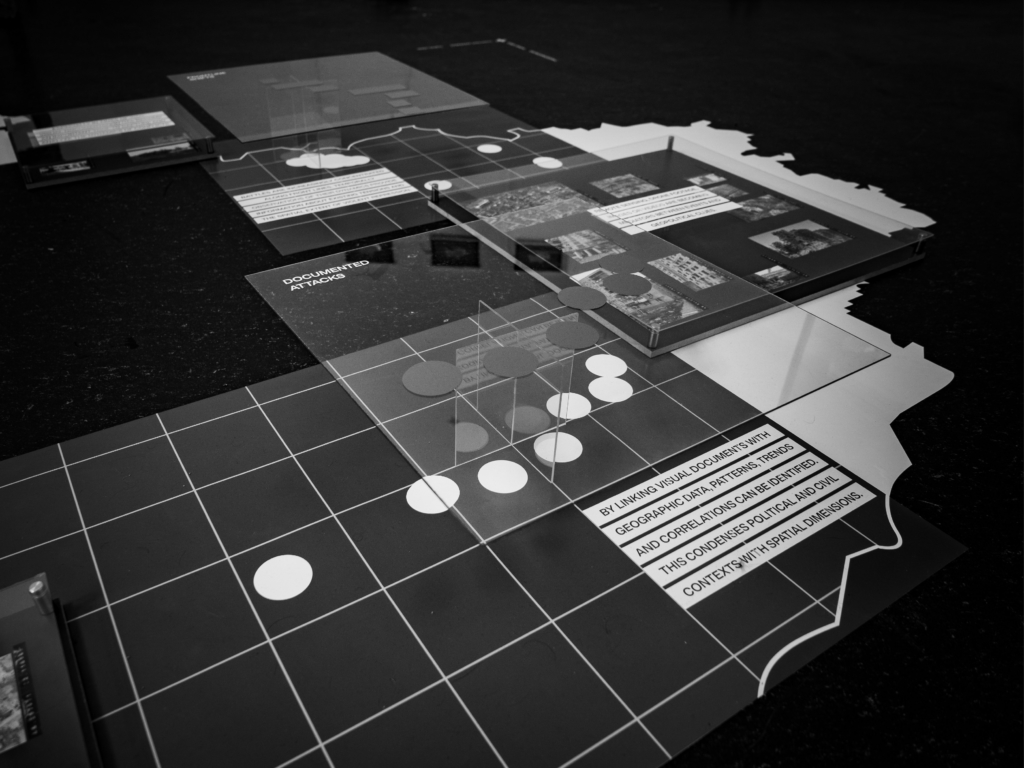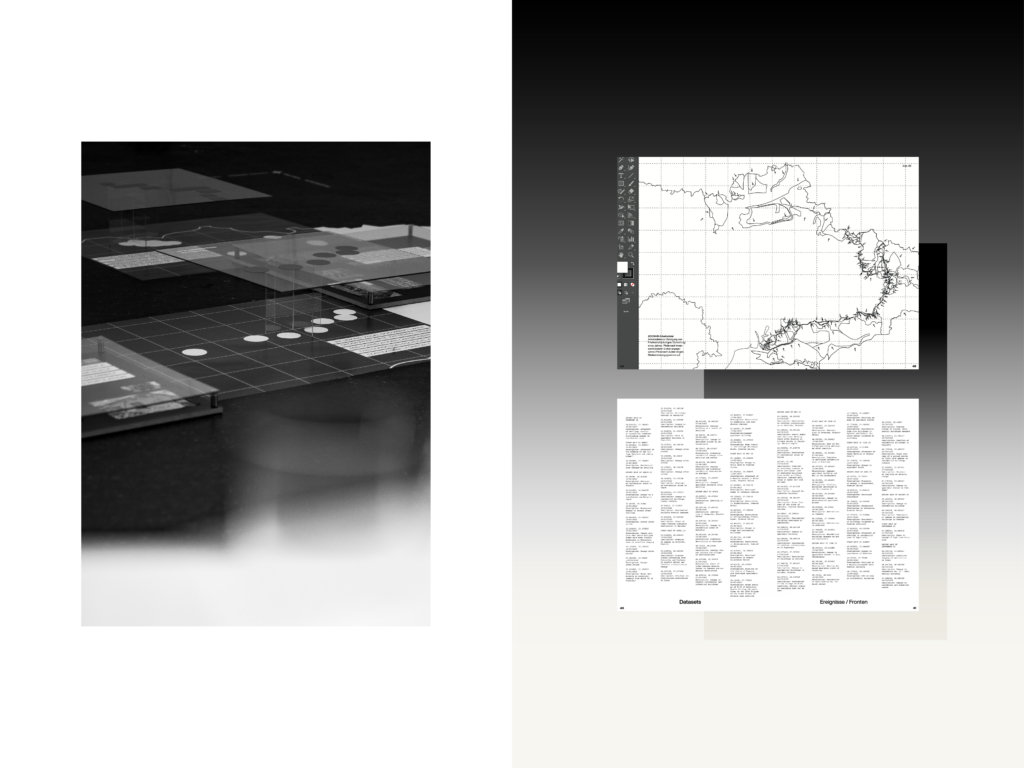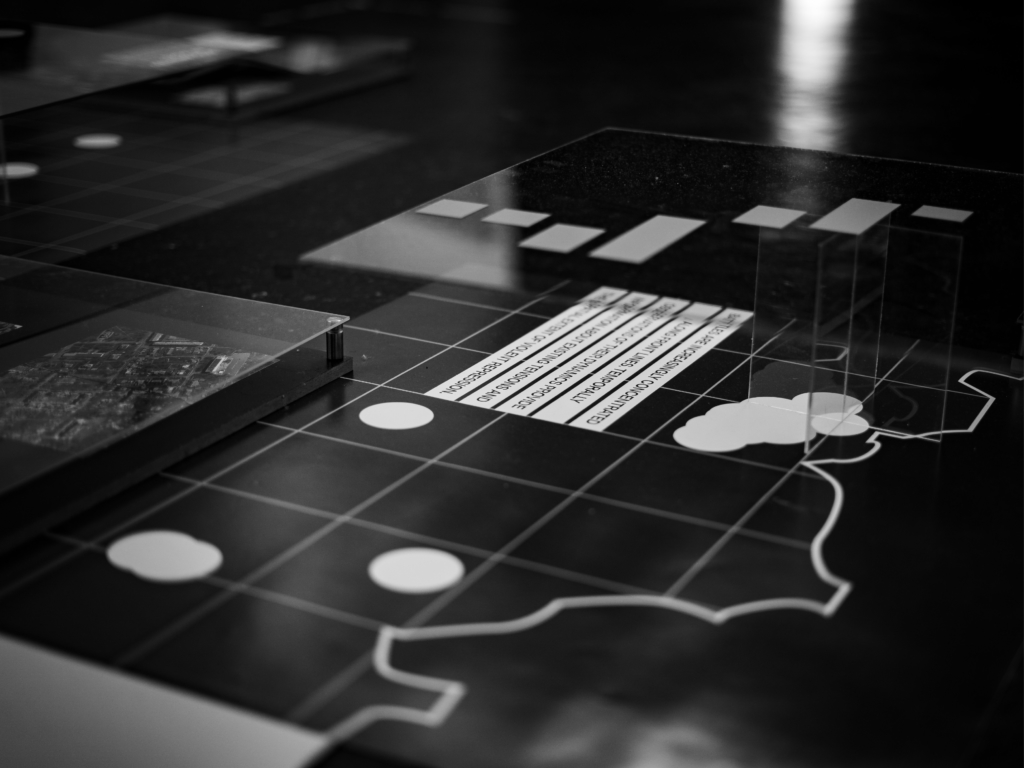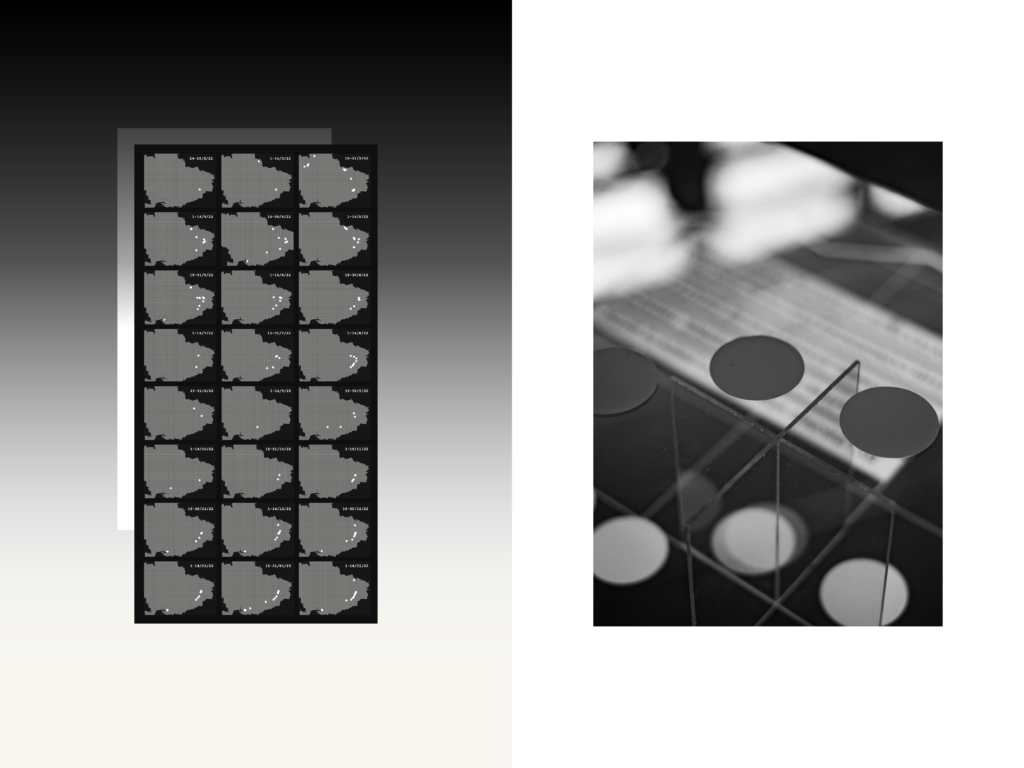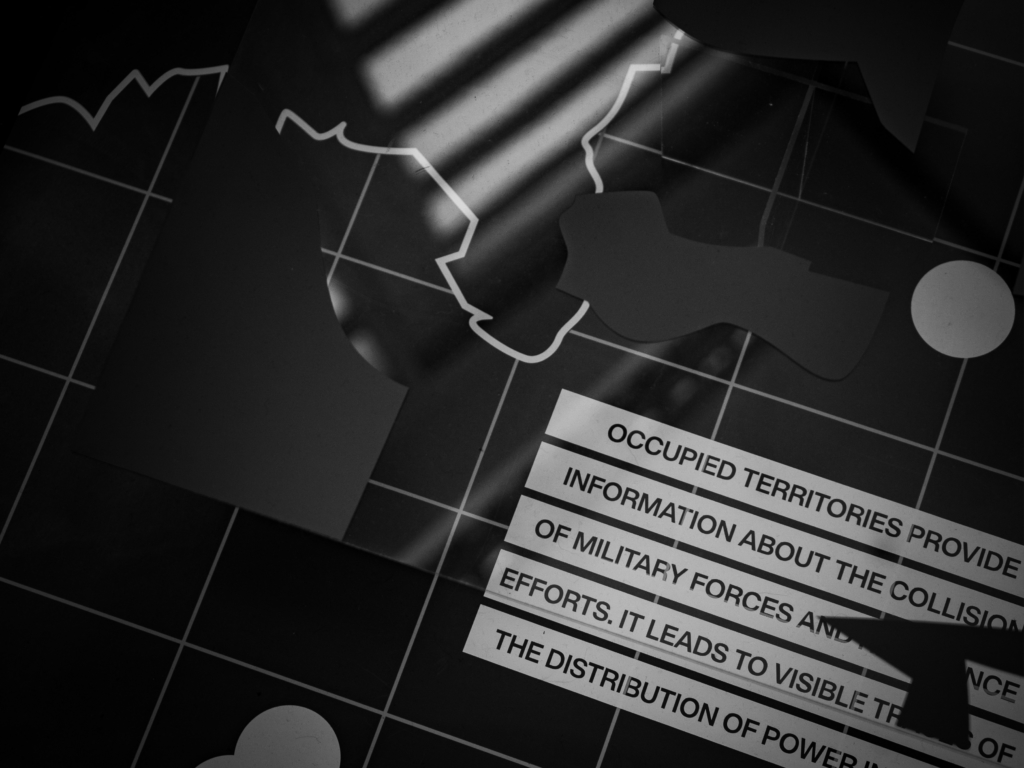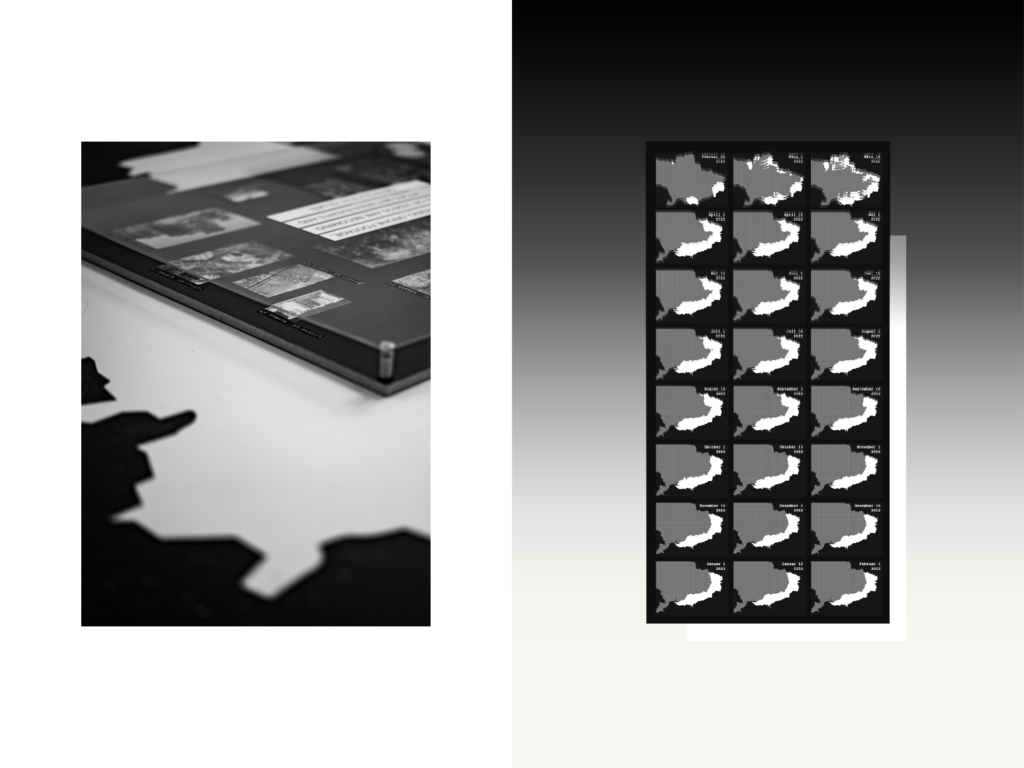In her bachelor thesis "DE/CONSTRUCT WAR" Yvonne Lober takes a meticulous look at the world of war images and war cartographies and their applications in the context of the current war in Ukraine. She focuses on the study of spatial politics and visual cultures in war cartographies and reconstructs publicly available data to illustrate developments, patterns as well as trends on the front lines. Her work provides an in-depth understanding of the developments of the conflict by highlighting the social impact on the civilian population. It has been awarded first prize in the Cologne Design Award 2023.
“DE/CONSTRUCT/WAR” is a research project in the Department of Design Theory and Research, supervised by Prof. Dr. Carolin Höfler. The BA thesis involves a visual exploration of frontline dynamics of the first year of the war in Ukraine. Central to this work is the digitally interconnected recording of attacks on the civilian population and their geographical location using OSINT (Open Source Intelligence) data and sources.
The work was primarily inspired by media observations at the beginning of the Russian invasion of Ukraine in February 2022, in which publicly available images were increasingly embedded in interactive maps and played a prominent role in the representation, assessment and tracking of war events. However, web-based maps designed to illustrate the changes and dynamics of a conflict showed to be underrepresented and which led to a missing understanding of war developments. To address this problem, various media sources – including satellite images, drone footage and published images on social media, as well as already prevalent interactive maps – were analyzed, cartographically reconstructed and evaluated to illustrate the changes and developments, as well as effects in the dynamics of war.
Given a personal motivation to engage with the topic of the impact of geopolitical conflict based on my family background in a war-torn region, I focused my research on a dataset that includes armed attacks on residential areas. It was important for me to combine the research with a clear focus on the consequences of war for civilian populations. This decision allowed me not only to gain a deeper insight into the concrete effects of war on the safety of civilians, but also to contribute to the discussion on the protection of civilians under international laws of war.
In addition to theoretical reflection and analysis, the thesis includes a conceptual realization in the form of an installation. It discusses war as a highly dynamic geopolitical actor. The exhibition provides a practical illustration of my theoretical findings and a deeper insight into the complexity and multi-layered nature of geopolitical issues. Accompanied by time-based media, the work sees itself as an experimental attempt at revealing digital dynamics in order to create new perspectives and approaches that raise awareness of the diverse influences and processes in conflict regions with a focus on civil society. In addition to gaining interdisciplinary knowledge, the research work also aims to raise awareness of the key role of design in the study of geopolitical circumstances and to establish the design discipline as an essential component of geopolitical research.
Photographer: Fabian Blum

